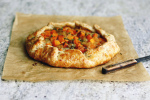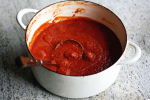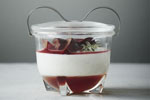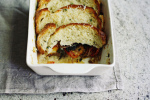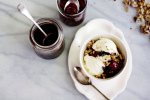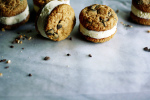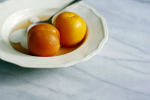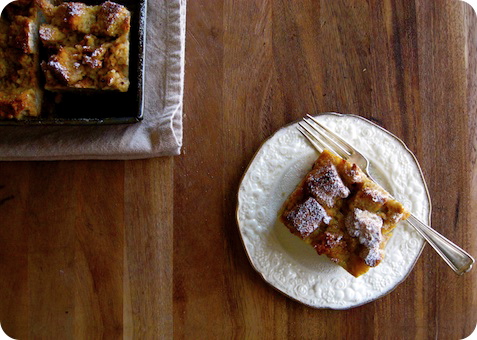The audacity to promenade
 Thursday, June 11, 2009 at 12:22PM
Thursday, June 11, 2009 at 12:22PM So here's my trouble. I wanted to tell you about Martha Stewart's Cupcakes (Clarkson Potter, 2009). To chat about my impressions, my likes, my dislikes, the nitty gritty details of this cookbook devoted to the small.
But my attention has been captured by someone small, a small one who is getting bigger every day. Happy Birthday to you, our William - today is your first, and I can hardly find the words.
All week I have been vacillating between my heart bursting with pride and my chest tightening with emotion. Such is the state of Mummyhood. The First Birthday is an event met with a mile-wide grin and cheers of joy tempered with the sob-sniffle-wail of "my goodness, this is all too fast."
And fast it has been. Our Littler Man is walking.
William took his first tentative steps a few weeks back, and has now fully embraced the notion of upright locomotion. The rapid-fire thwack of his hands and knees on the floors of our home has been replaced with the padded rhythm of confident footsteps. And confident he is, as Will is not one to toddle.
In a manner unsurprising to anyone who has met him, our William has the audacity to promenade. His walk is so spirited, his step so lively, there is most surely a song in his heart.
Oh there now, I've digressed into ridiculous levels of Proud Parent Mode. My apologies.
Where was I? Oh yes, cupcakes. With William's first 1st birthday party planning underway, Martha Stewart's Cupcakes was a wealth of imaginative cake ideas, all on a scale befitting the occasion. Silly me though, I put Benjamin in charge of selecting the flavour to try - and again as my children are nothing if not consistent, he chose the most basic of recipes, chocolate upon chocolate.
But his choice was surprisingly astute, as our previous favourite chocolate cupcake was the One Bowl Chocolate Cupcakes from Martha Stewart's Baking Handbook (Clarkson Potter, 2005). Now One Bowl Chocolate Cupcakes are in the new book, but it is a different recipe.
So it was settled, the dessert menu chosen for our celebration. The recipe itself warrants little description; it is a standard cocoa and buttermilk cake, with only a scant amount of oil. The method is as demanding as a boxed cake, with the dry ingredients whisked in a bowl, then the eggs, buttermilk and oil poured over. A few stirs, and it is done.
This recipe yields cakes that look the example of cupcake perfection; each rose with the same rounded cheek, bulging slightly at their edges but with a gentle slope. Best of all was their colour - a true, dark brown, exactly how a chocolate cupcake should look.
As we did not have the recipes side-by-side for comparison, we had to rely on (unreliable) memory for our verdict. While everyone enjoyed the cupcakes, they were not met with the same knee-buckling adoration of the previous version. When I first made the Baking Handbook incarnation of One Bowl Chocolate Cupcakes, I recall thinking that these were simply the best cupcakes ever. This time, not so much. They were good, but not exceptional.
It should be said though, that I am terribly finicky about my chocolate cakes so it takes a good deal to impress. While I shrugged at the taste, there was nary a complaint from our guests. Approximately 5 minutes after the Happy Birthdays and candles blown out, there were quite a few happy faces smeared with whipped ganache frosting.
While my personal assessment of the cupcakes was lackluster, my overall impression of the book from which they came is not. I did not test many recipes from the book (honestly, even I can only eat so many cupcakes) as I would have liked, but I can tell you that the book Martha Stewart Cupcakes is full of fun.
There is an obvious, infectious merriment in the way that the subject matter is treated, and the variations on the theme simply make me smile. One cannot help but be made a bit happier by pages upon pages of sprinkles and gumdrops, marizpan ladybugs, and coconut-feathered chicks.
What's more, the cookbook is inspiring. Ingeniously, the book pushes the boundaries of cupcakery to include all manner of small cakes, and even cookies and meringues, as long as they are baked in that distinctive shape.
There are filled cupcakes, layered mini-cakes, cookie-crusted cheesecakes, and simple pound cakes. Not all cakes are frosted, such as the Tiny Cherry and Almond and Pistachio-Raspberry teacakes, making these gems the ideal everyday treat to be tucked into lunchboxes or enjoyed as an afternoon snack. The combination of flavours, specific decorating techniques and helpful guides (including clip art templates) could all be adapted and developed to suit your specific tastes, and could be applied to the creation of full-sized cakes.
One caveat, as with Martha Stewart's Cookies (Clarkson Potter, 2008), much of the content included in Martha Stewart's Cupcakes has been previously featured in the various publications of Martha Stewart Omnimedia. Personally, I enjoyed having the recipes available in a single source, but others may disagree and might have preferred a wholly originally collection.
Time to get back to the business of being Mum to a 3-year-old and a 1-year-old. Oh my. So big. So fast. So wonderful.
Happy, happy day.

One Bowl Chocolate Cupcakes
From the book Martha Stewart's Cupcakes.
Recipe
More photos from this series shot by my brother and sister-in-law can be seen here.
Now you didn't think that I'd forget to announce the winner of our Martha Stewart Cupcakes giveaway, did you?
Without further wait, Mr. Random.Org took the honour of selecting our winners, as follows.
The First Prize Winner will receive one copy of the Martha Stewart Cupcakes and one copy of Martha Stewart Cookies:
Chocolate Shavings
The Second Prize Winners will each receive a copy of Martha Stewart Cupcakes:
Dor and Michelle R.
I would like to thank everyone who entered, and highly recommend the checking out the fantastic conversation taking place in the comments section. To the winners, please e-mail me at tara [at] sevenspoons [dot] net, with your contact information at your earliest convenience.


